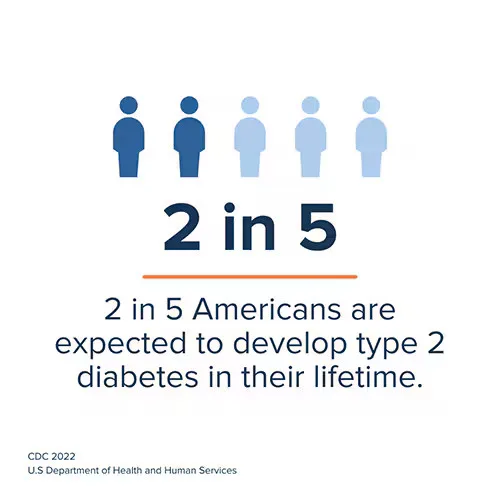How Long-Term Care Insurance Companies Underwrite Diabetes
Last updated on March 2, 2025
“Can I qualify for long-term care insurance if I have diabetes?”
With diabetes affecting over 38 million Americans, we’re often asked how long-term care insurance (LTCI) companies consider applicants with diabetes. As an independent brokerage dedicated to helping clients secure the right coverage, we want to shed light on how LTCI companies underwrite this condition. Understanding how insurers evaluate diabetes can help you understand your options and improve your chances of approval.
Why Diabetes Matters in LTCI Underwriting
Long-term care insurance is intended to cover future care needs, so insurers focus on assessing an applicant’s health stability and risk of needing care in the future. Diabetes–whether Type 1 or Type 2–raises flags because it’s a chronic condition tied to potential complications like neuropathy, kidney disease, or mobility issues. Underwriters will assess how well your diabetes is managed and whether it signals a higher likelihood of requiring long-term care in the future.
Key Factors in Underwriting Diabetes
When you apply for LTCI and have diabetes, here’s what underwriters will scrutinize:
1. Type of Diabetes 📑
– Type 2 Diabetes: Type 2 is often manageable with diet, oral medications, lifestyle changes, or insulin. Insurers are more lenient if it’s well-controlled and there are no complications.
– Type 1 Diabetes: Diagnosed earlier in life and always insulin-dependent, Type 1 is much tougher to insure due to its lifelong nature and higher risk of complications. Some carriers (NGL & Thrivent) will decline outright. Others, for example Mutual of Omaha, will consider it on a case-by-case basis and take into consideration age of diagnosis, the units of insulin used per day, and any other comorbidities.
2. Control and Stability ✔️
– A1C Levels: This blood test reflects average glucose levels over 2-3 months. Most insurers look for an A1C below 7.0-7.5% (Thrivent will accept up to 8.5%, with certain conditions) as evidence of good glycemic control. Higher levels may lead to postponement or decline.
– Medication Use: Diet-controlled diabetes or minimal oral meds (e.g. metformin) is viewed favorably. Insulin use doesn’t necessarily disqualify you, but it does reduce your options. Frequent dosage changes or having recently started a new medication can also make it difficult for underwriters to assess stability. Generally, you’ll want to be stable on whichever medications you’re taking for several months to have the best odds of a favorable approval.
3. Time Since Diagnosis 📅
– Newly diagnosed diabetes (within 6-12 months) often triggers a delay in approval. Insurers want a track record of stability–typically 6 months or more–before considering coverage. Long-standing, well-managed diabetes with no complications can work in your favor.
4. Complications 🚩
– No complications? That’s ideal. Complications like neuropathy (nerve damage), retinopathy (eye damage), kidney disease, or cardiovascular disease often lead to declines, as they suggest progression that could require care.
– A history of hospitalizations (e.g. diabetic coma or severe hypoglycemia) is a red flag, signaling a lack of stability.
5. Overall Health 🍎
– Similar to diabetic complications, underwriters will look at other factors in combination; ‘diabetes + X’. Obesity, smoking, and hypertension in combination with diabetes is much more difficult to insure. A healthy BMI, normal blood pressure, and no other chronic conditions will all improve your odds.
For example, a 60-year-old with Type 2 diabetes, and A1C of 6.6%, managed with diet and metformin, no complications, no comorbidities, diagnosed 12+ months ago, would have multiple options for coverage at standard rates. But a 65-year-old with Type 2 diabetes, an A1C of 8.9%, insulin-dependent, with neuropathy might face a decline.
How Insurer Guidelines Differ 📃
Every LTCI company has its own underwriting guidelines, which is where our expertise as an independent brokerage comes in to play. For example, whereas NGL will decline insulin-dependent diabetes, we know that Mutual of Omaha may insure at Class I rates depending on the units of insulin used daily.
By working with multiple carriers, we can find the best fit for your health profile, and request risk assessments prior to application to avoid the likelihood of a decline, which can make it harder to obtain coverage elsewhere.
Here is how several of the top long-term care insurance companies approach underwriting for diabetes:
Mutual of Omaha (traditional)
Mutual of Omaha will be a a go-to pick for certain applicants with diabetes due to its flexibility around Type 1 and insulin usage. Whereas NGL and Thrivent will decline for insulin-dependent diabetes, Mutual of Omaha will consider applicants for coverage who use <50 units/day of insulin. They will also consider type 1 diabetes in combination with tobacco use.
Well-managed Type 2 diabetes is eligible for standard rates.
An A1C of >8.0% or diabetes in combination with certain conditions, including neuropathy, nephropathy, numbness or tingling in the extremities, peripheral vascular disease, or history of TIA or stroke will result in a decline.
That said, Mutual of Omaha can still extend coverage to those with diabetes and coronary/carotid artery disease, subject to certain conditions.
Thrivent (traditional + hybrid)
For new onset < 12 months, A1C of <7.5% when diagnosed, no complications and stable comorbidities, standard rates may be available.
For stable diabetes diagnosed >12 months ago, stable medication dose, stable/controlled comorbidities, no complications, and stable A1C between 7.5-8.5%, standard or rated may be available. (Note that this makes them an option for those with higher A1C values who would be declined elsewhere.)
Declines will result for Type 1 diabetes, diabetes for >20yrs or diagnosed before age 40, stroke/TIA <60 months ago, neuropathy <24 months ago, current smoker or quit <24 months ago, BMI > 38 or BMI < 17, skin/foot ulcers < 60 months ago.
National Guardian Life (traditional)
NGL will consider Premier–their best rate–for Type 2 applicants with good blood sugar control, A1C consistently between 6.5-7.5%.
For fair control, mildly overweight, ex-smoker, or A1C 7.6-8.0%, they’ll assess on a case-by-case basis.
For Type 1 or A1C consistently above 8.0%, they’ll decline.
OneAmerica (hybrid)
OneAmerica indicates that Type 1 diabetes will cause an attending physician statement (APS)–essentially your medical records–to be reviewed, so traditional vs. expedited underwriting.
Nationwide (hybrid)
Nationwide indicates that Type 1 diabetes may result in a decline. Most recent A1C values will be required for all diabetic applicants.
Compare your long term care insurance options
Are you looking for the best long term care coverage at the lowest cost, that fits your specific needs?
Our brokerage is family-run with a combined 41 years of experience in the insurance industry. As independent brokers, we offer customized advice and recommendations, and can direct you to the best option among the many carriers we represent: Nationwide, Brighthouse Financial, OneAmerica, Mutual of Omaha, National Guardian Life, Lincoln Financial Group, Thrivent, and Securian.
It will be our pleasure to help you navigate your options.
For comparative long term care quotes, please contact us at 1-866-LTC-BROKERS. Or simply fill out our quote request form and we will reply shortly.
Thank you. We look forward to assisting you.



Toll-free: 1-866-LTC-BROKERS
Call today for your FREE long term care insurance quotes. Or fill out the secure form below to receive your quotes online.
🔒 We take your privacy seriously. Your information will not be shared with 3rd parties




Leave a Reply